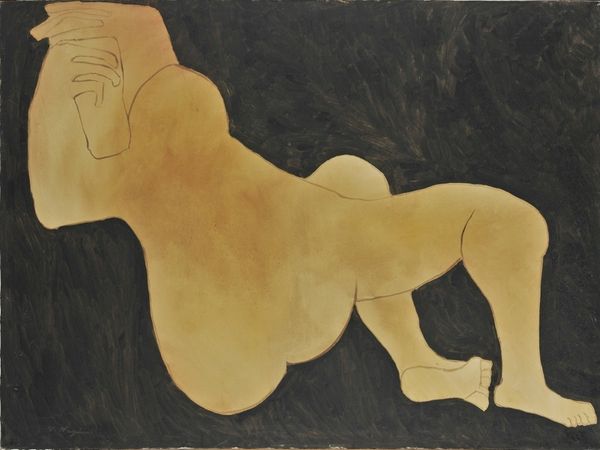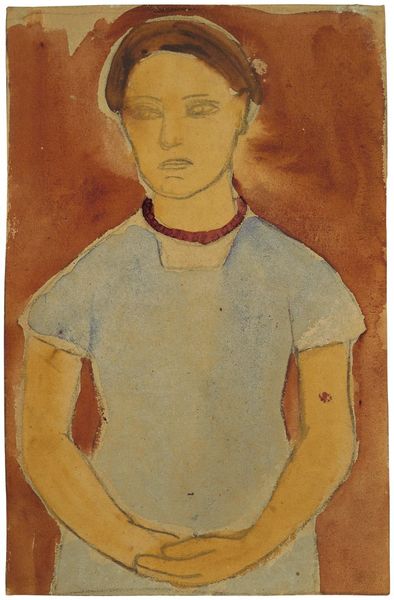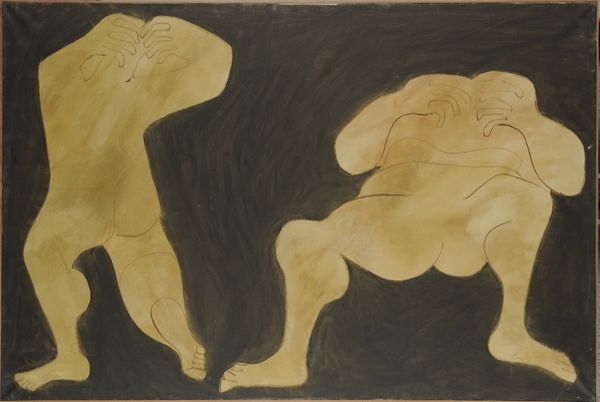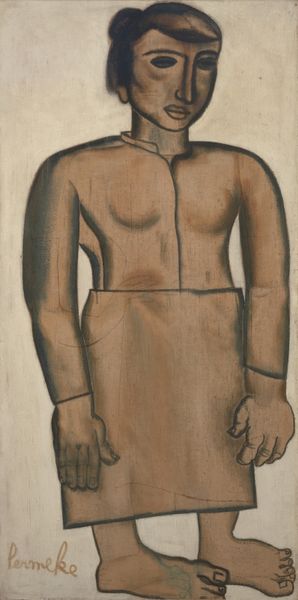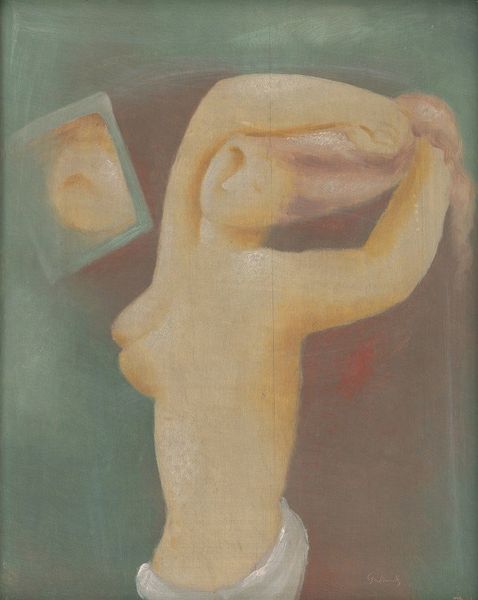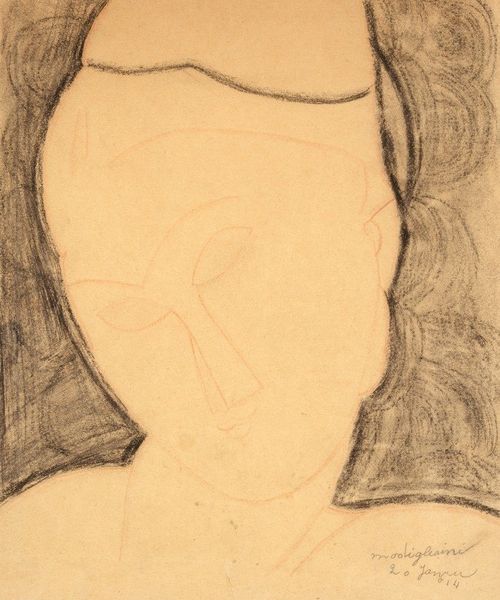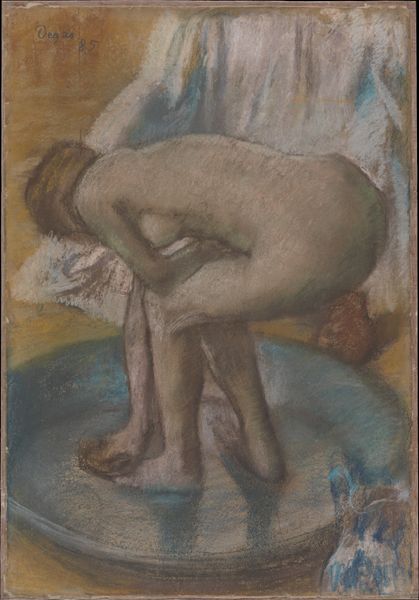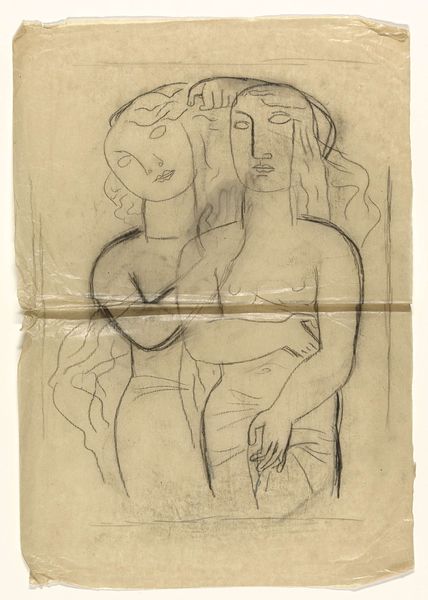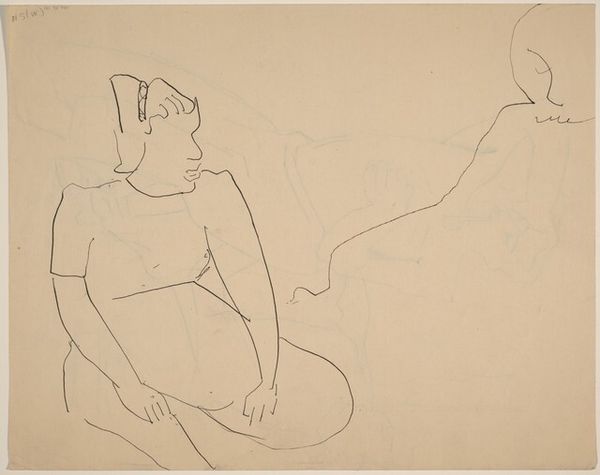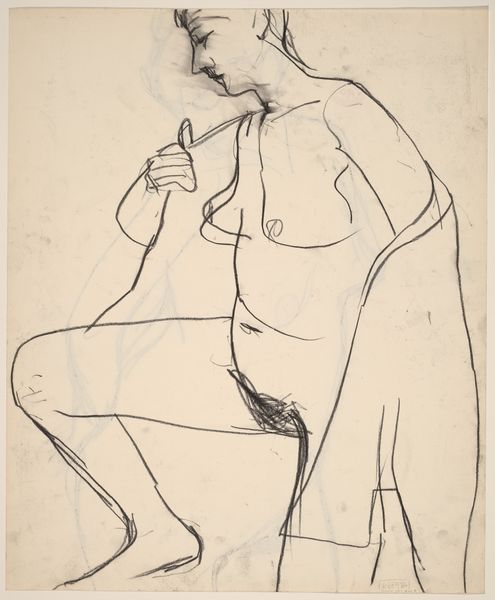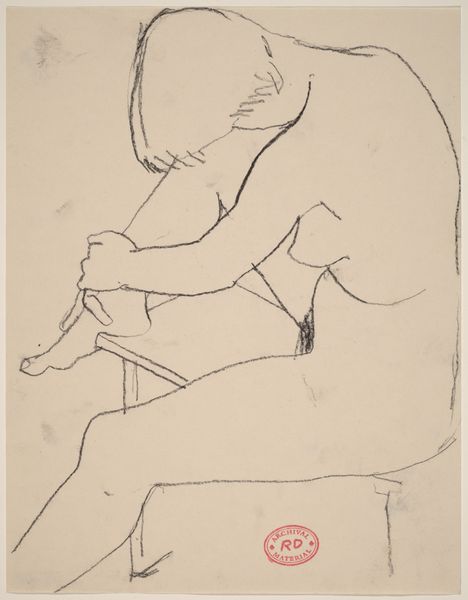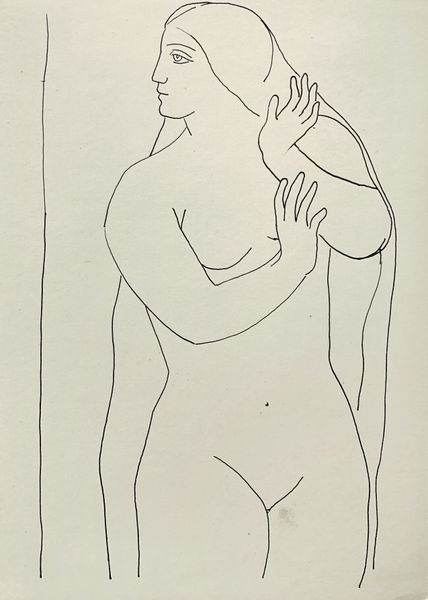
drawing, oil-paint
#
portrait
#
drawing
#
oil-paint
#
figuration
#
oil painting
#
line
#
portrait drawing
Copyright: Nikos Nikolaou,Fair Use
Curator: This is Nikos Nikolaou's "Figure," from 1960, oil paint on some kind of support—maybe board, or possibly canvas? It's hard to tell from here. Editor: Immediately, there's a stillness. A nude figure, compressed within this dark ground... it looks almost like terra cotta, like an archaic figurine, weathered, unearthed after centuries. What symbols are embedded in such a timeless scene? Curator: Nikolaou, heavily influenced by Byzantine iconography, often returned to the human form. Look at how the dark lines define the shape, echoing ancient Greek vase painting. But consider the stark contrast between this style and what was happening elsewhere in the art world in the '60s, with the rise of Pop Art and abstraction. Editor: Indeed! Nikolaou used distinctly reductive techniques of linework, emphasizing form and feeling. The color evokes ochre clay pigment, which connects, as you say, with both religious iconography and a sense of grounding—it emphasizes that this image is of the Earth, both figuratively and literally composed of it. Is the figure representing timeless human emotions and conditions or does it express a deep relationship to materiality? Curator: Well, in the Greek Orthodox tradition, the human form, particularly the face, is the locus of the divine image. Perhaps this very plain rendering and compressed pose represent humanity humbled. Think of this posture not just as an individual, but as a symbol of our shared experiences—vulnerability, self-reflection, perhaps even a touch of isolation. It carries echoes of a Pietà. Editor: An astute observation, given that Nikolaou lived in a period of societal and political transition, with stark contrasts between rich and poor—between what exists materially and spiritually. Does such compression represent something specific to do with working-class people, such as material constraint—making something more profound come out of the little available? What is lost materially becomes psychologically and emotionally poignant, perhaps? Curator: These are important considerations for understanding Nikolaou’s broader project! Considering the time he was working in, the work resists straightforward answers, leaving us to confront universal, timeless questions about our existence. Editor: True. Perhaps the synthesis of material restraint and the emotional openness creates something unexpectedly moving, a testament to what can emerge from stark simplicity.
Comments
No comments
Be the first to comment and join the conversation on the ultimate creative platform.
